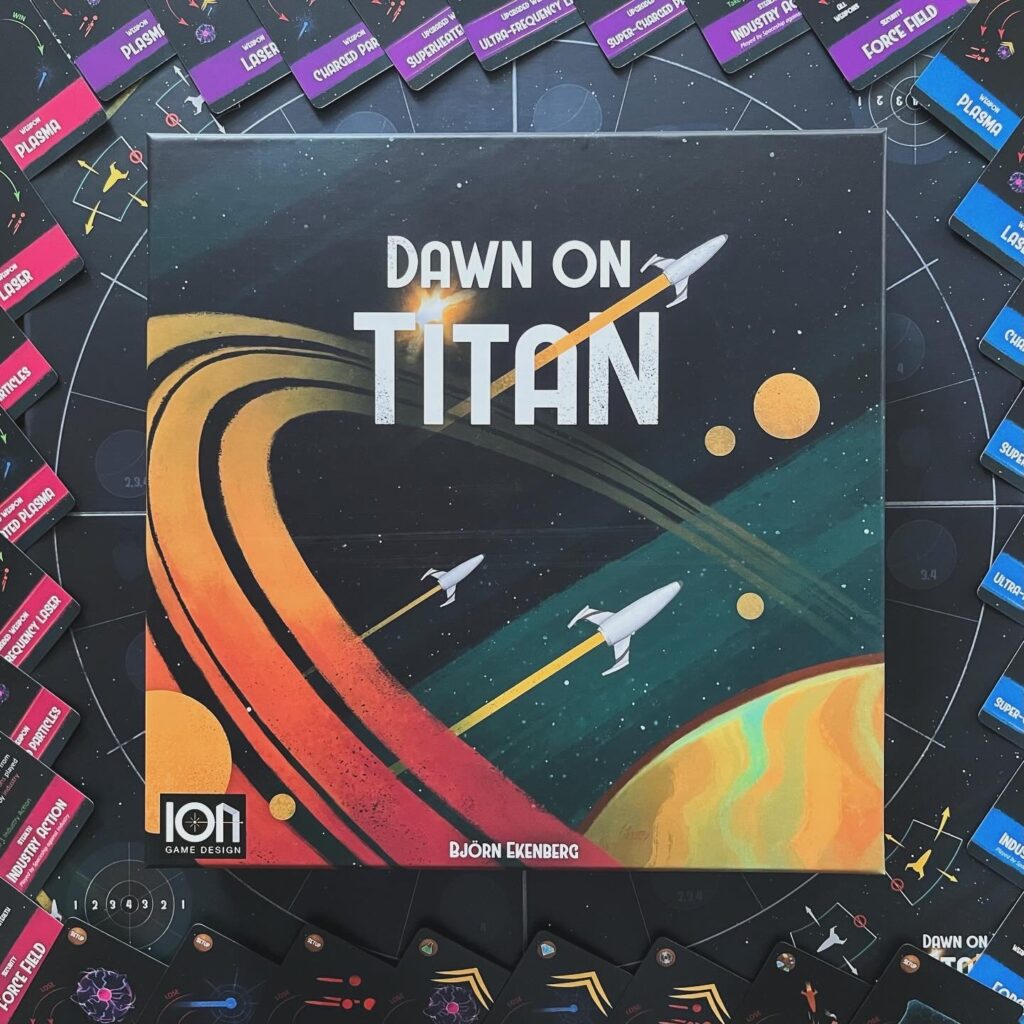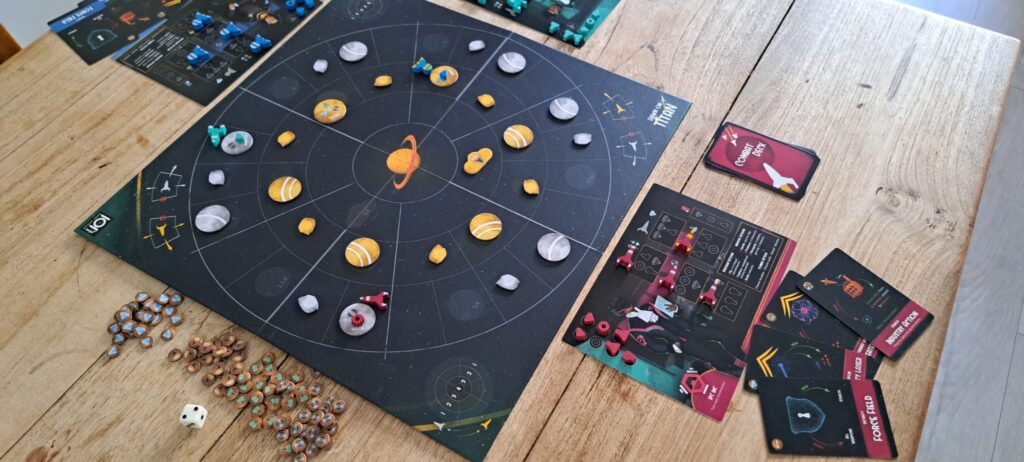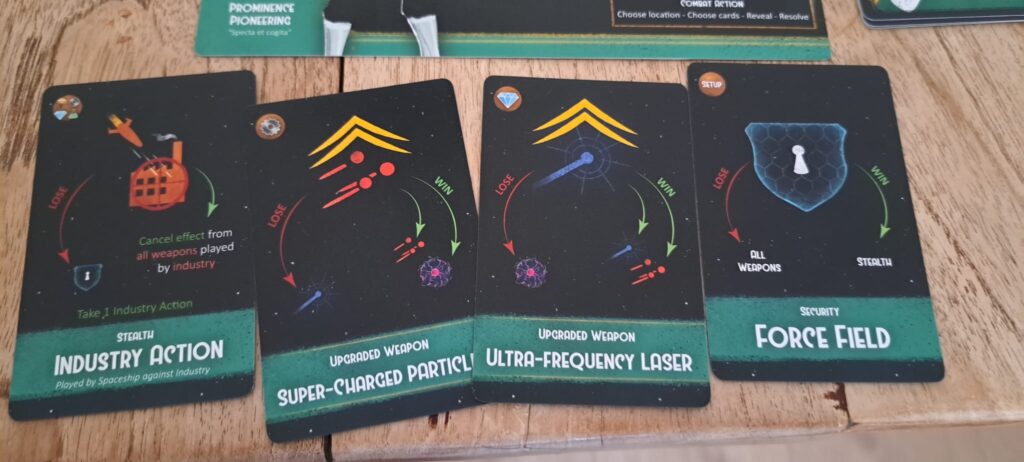Board your spaceship and prepare for a cosmic adventure in “Dawn on Titan.” This board game takes 1-4 players to a not-too-distant future, where corporations vie for control of Saturn’s moons and their valuable resources.

Background
Dawn on Titan takes you on a journey through the solar system, exploring Saturn and its moons, building industries and competing for victory. The game is played on a turn-by-turn basis and ends when one player manages to build all their industries.
Setup
The game board of “Dawn on Titan” shows Saturn in all its majesty, surrounded by three rings (technically Saturn itself is also considered an orbit). Moons and moons are strategically placed around each orbit according to the designated space. Each player receives an individual player board, colored game pieces, starting cards for battles and a stack of upgrade cards in their distinctive color. Each player board is slightly asymmetrical, with a unique distribution of industry types. While this is an interesting idea, in my opinion it has little impact on the game play.

The theme of the game is enhanced by beautiful artwork that brings the cosmic environment to life and immerses players in the adventure space story. Each player board is slightly asymmetrical, with a unique distribution of industry types. While this asymmetry is an interesting feature, we found that it generally has little impact on gameplay.
Gameplay
The game is played on a turn-by-turn basis and ends when a player has built all of their industries. Players use their spaceships to move, explore moons and build industries.
One of the striking aspects of the game is directional movement. Moons on silver orbits move clockwise, while those on gold orbits move counterclockwise. Players have three actions each turn to spend on various options, such as fly, perform an Immelmann maneuver, explore or build.

Building industries is a key aspect of the game. Each moon shows two types of industries, one of which players can build once the moon is explored. The color of the moon must match the color of the ship in order to explore or build.
In addition to ship actions, there are also industry actions, including building spaceships and upgrading battle cards. Combat in the game is based on a rock-paper-scissors mechanism, with players playing their battle cards face-down. There are three types of weapons (Lasers, Plasma and Charged Particles) and a security/industry card. Upgrades improve weapons and determine the outcome of battles.
Conclusion
“Dawn on Titan” fits comfortably into the “family weight” category. The game is fast-paced, accessible and understandable, even for newcomers. While it offers enough depth to entertain experienced players, it is not so complex as to exclude less experienced or younger players.

The game has some nice unique mechanics, such as directional bound movement and the rock-paper-scissors combat system. These add an extra layer of strategy and excitement to the game. While the asymmetrical player boards are interesting, they do not seem to significantly affect strategic decisions in the game.
What we like about “Dawn on Titan” is the seamless integration of the theme and the beautiful artwork that brings the cosmic voyage to life. The ability to choose actions with a fixed number of turns gives players flexibility and strategic options, resulting in engaging gameplay. “Dawn on Titan” manages to engage players of different experience levels, which is crucial for board games in the “family weight” category.”
However, there are some critical points to note. The first part of the game can feel slow, as players focus primarily on exploring and building industries. The exciting combat mainly takes place in the later stages of the game. We also found that 2-player play can be less satisfying, as players often avoid each other and have little interaction until the end. With 4 players, the game appears to take on a more dynamic, lively and competitive composition.

All in all, Dawn on Titan offers a solid board game experience with an interesting space theme and some fun unique mechanics. It is important to consider what player count is most appropriate for your group before embarking on this cosmic adventure.



